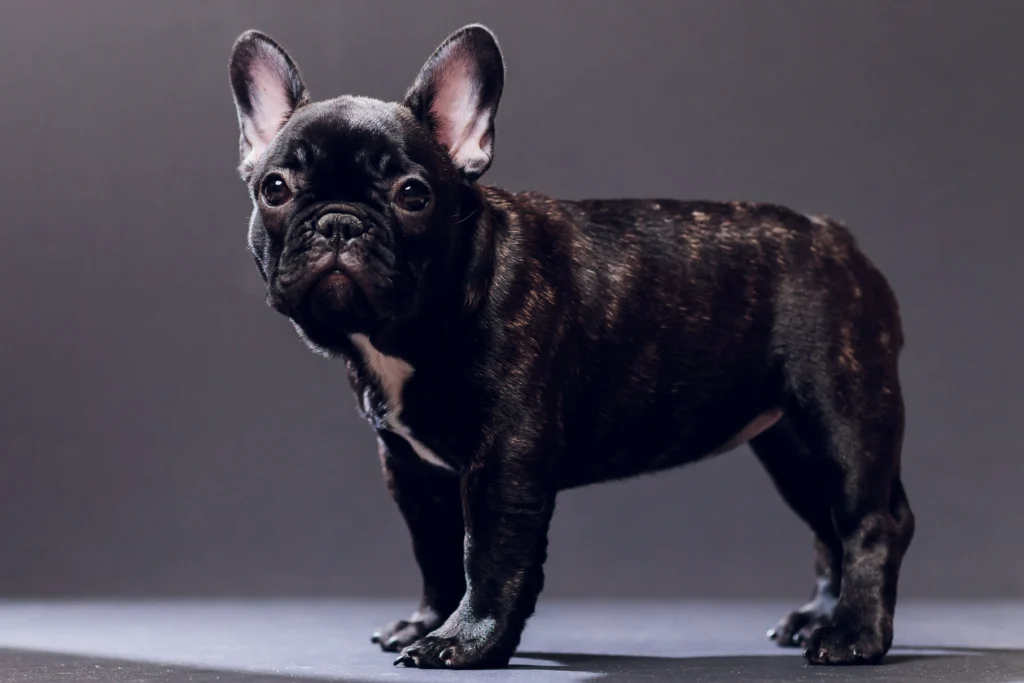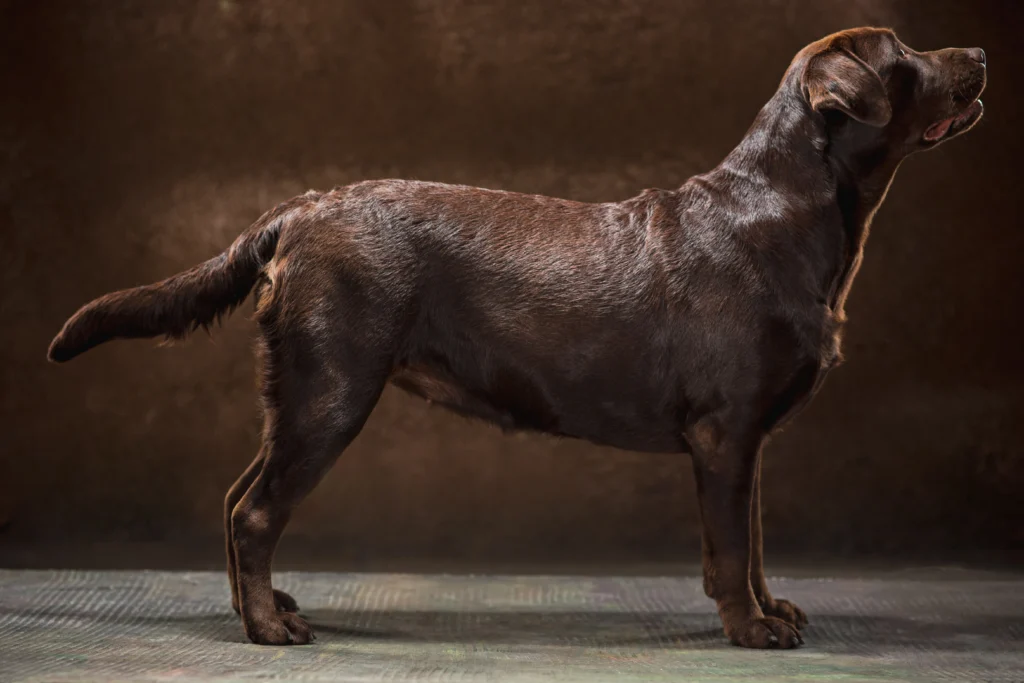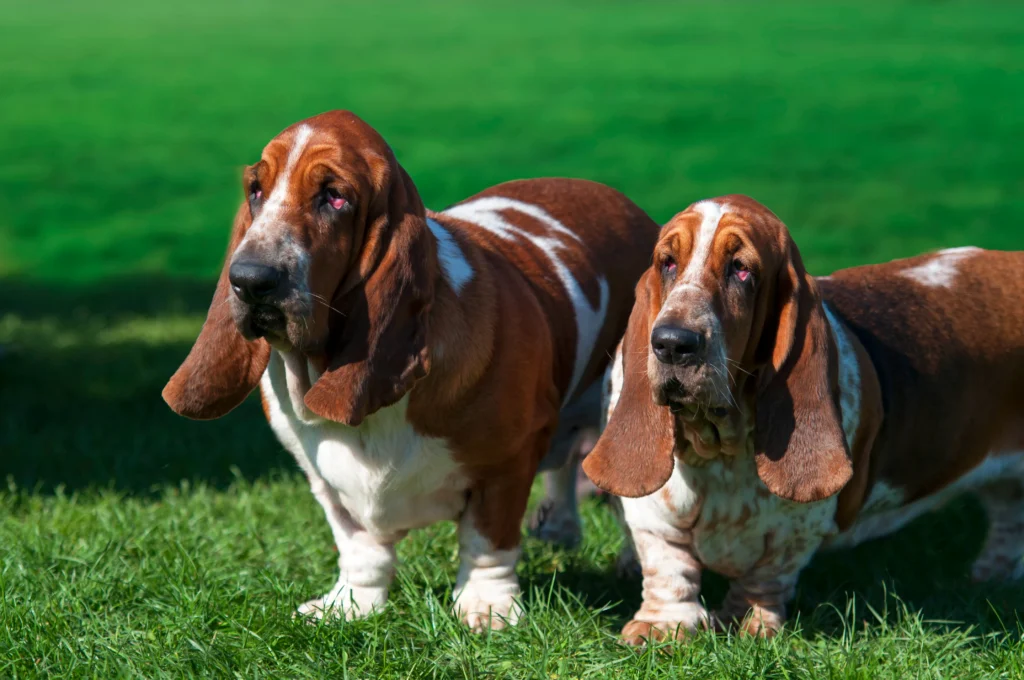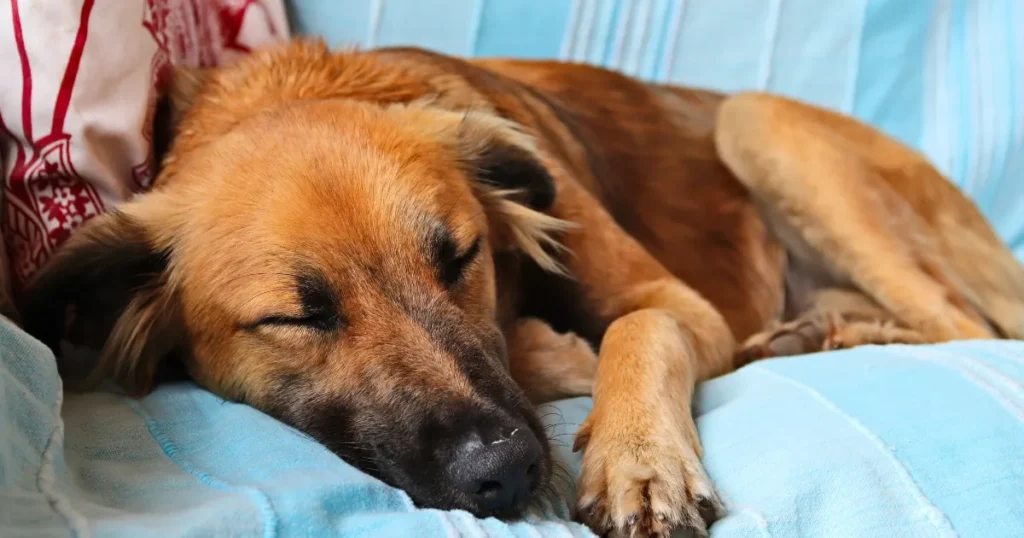Table of Contents
- Understanding What Makes a Dog Breed “Lazy”
- Benefits of Choosing a Low-Energy Dog Breed
- Popular Lazy Dog Breeds for Apartment Living
- Best Low-Maintenance Dogs for First-Time Owners
- Big Lazy Dog Breeds for Relaxed Living
- Small Lazy Dog Breeds Perfect for Cuddling
- Health Considerations for Low-Energy Dog Breeds
- Training Tips for Lazy Dog Breeds
- Grooming Needs of Low-Maintenance Dogs
- Companionship and Social Needs
- Exercise Requirements for Low-Energy Dogs
- Conclusion
- FAQ
Looking for a dog that fits your easy-going lifestyle? Lazy dog breeds are great for those who love to relax and cuddle. They don’t need lots of exercise or constant playtime.
Not every dog needs to run marathons or do lots of daily workouts. Some breeds are naturally calm and happy with little activity. These breeds are perfect for city living or for people who can’t move around much.
Choosing a low-maintenance dog means knowing their special traits. These dogs love you a lot and need less effort from you. They come in all sizes and personalities, from small lap dogs to big gentle friends.
Key Takeaways
- Lazy dog breeds are perfect for low-energy households
- Some breeds adapt well to small living spaces
- Low-maintenance dogs require less exercise
- Calm breeds offer consistent companionship
- Selecting the right lazy dog depends on individual lifestyle
Understanding What Makes a Dog Breed “Lazy”
Not all dogs have the same energy levels. Some breeds are known for being very laid-back and needing less activity. To understand these breeds, we need to look at their unique traits and how they behave.
Dog experts have created categories to help people know how active different dogs are. These categories help find breeds that are great for those who like a calm home.
Activity Level Classifications
Dogs are grouped by how active they are:
- Sedentary: They like to just lounge around
- Low-Energy: They need short walks and playtime
- Moderate: They need regular exercise
- High-Energy: They always want to move and play
Energy Requirements
Lazy dog breeds need very little exercise. They usually need 30-60 minutes of gentle activity each day. This makes them perfect for people living in apartments or who don’t get out much.
Behavioral Traits
“Some dogs are natural couch potatoes, perfectly content to spend hours relaxing beside their owners.” – Canine Behavior Specialist
Calm and lazy dog breeds often have certain behaviors:
- They prefer to stay indoors
- They love to nap for a long time
- They don’t get upset easily by things outside
- They don’t really want to play a lot
Knowing these traits helps people pick the right dog for their lifestyle and home.
Benefits of Choosing a Low-Energy Dog Breed
Choosing lazy dog breeds can change how you experience pet ownership. They are perfect for those who want a calm friend that fits their lifestyle. These breeds are great for many living situations, from small apartments to homes for seniors.
“The perfect dog isn’t about constant activity, but about meaningful companionship.” – Dog Wellness Magazine
These relaxed dogs bring many benefits:
- They need less exercise than high-energy dogs
- They are easy to care for, even for busy people
- They are great for living in small spaces
- They are perfect for seniors or those with limited mobility
Senior-friendly lazy dog breeds can really help reduce stress and costs. You’ll save money on dog-walking, special exercise gear, and training. Their calm nature makes them wonderful friends who easily fit into your daily life.
Cost savings go beyond just money. Lazy dog breeds need:
- Less grooming
- Less training
- Lower vet bills because they are healthier
Choosing a lazy dog breed isn’t about laziness—it’s about finding a perfectly matched companion that complements your lifestyle and energy level.
Popular Lazy Dog Breeds for Apartment Living

Finding the right lazy dog breed for your apartment can make it a peaceful haven. These breeds are perfect for indoor living because they don’t need a lot of exercise or space. The best breed for you will depend on their size, personality, and how well they fit your lifestyle.
- Minimal exercise requirements
- Low noise levels
- Adaptability to smaller living spaces
- Calm temperament
Small Apartment-Friendly Breeds
Small lazy dog breeds are great for small spaces. They don’t need much room but they love to cuddle a lot.
| Breed | Weight Range | Energy Level |
|---|---|---|
| Shih Tzu | 9-16 lbs | Low |
| Pug | 14-18 lbs | Very Low |
| Cavalier King Charles Spaniel | 13-18 lbs | Low |
Medium-Sized Options
Medium-sized lazy dog breeds are a great choice. They are not too big but still offer lots of companionship. They fit well in indoor spaces and are very friendly.
- French Bulldog: Known for minimal exercise needs
- Basset Hound: Exceptionally relaxed temperament
- Bulldog: Prefers lounging to long walks
Large Breeds Suitable for Apartments
Some big dog breeds can also be great for apartments. They are calm and don’t need a lot of space. They just need some care and occasional walks.
“Not all large dogs require extensive space. Some breeds are natural couch potatoes.” – Veterinary Expert
| Breed | Weight Range | Space Requirements |
|---|---|---|
| Great Dane | 110-175 lbs | Moderate |
| Greyhound | 60-80 lbs | Low |
| Mastiff | 120-230 lbs | Moderate |
Best Low-Maintenance Dogs for First-Time Owners
Choosing your first dog can be a big decision. For those new to pet ownership, there are many lazy dog breeds that are easy to care for. The right breed can make your first pet experience enjoyable.
When looking for the best lazy dogs for first-time owners, think about breeds with calm temperaments and little need for exercise. These dogs are great companions and don’t need constant attention.
- Bulldog: Known for minimal exercise needs
- Basset Hound: Relaxed and low-energy companion
- Pug: Compact and cuddly apartment dog
- Shih Tzu: Loving lap dog with low maintenance
“The perfect first dog should match your lifestyle and energy level” – Veterinary Expert
Knowing what each breed is like is key to a great pet experience. Your ideal lazy dog should have low energy but still be very affectionate.
| Breed | Exercise Needs | Grooming Difficulty | Temperament |
|---|---|---|---|
| Bulldog | Low | Moderate | Gentle |
| Basset Hound | Low | Easy | Calm |
| Pug | Very Low | Easy | Playful |
| Shih Tzu | Low | Moderate | Affectionate |
Remember, every dog requires love, attention, and basic training regardless of their energy level.

Big Lazy Dog Breeds for Relaxed Living
If you dream of a gentle giant that loves to lounge, big lazy dog breeds are perfect. These breeds are both impressive in size and calm in nature. They fit well into homes where relaxation is key.
Giant Breeds That Love to Lounge
Some of the most loved lazy dog breeds are extra-large. These gentle giants have laid-back personalities and need little exercise. Popular big lazy dog breeds include:
- Great Dane
- Newfoundland
- Saint Bernard
- Mastiff
Exercise Requirements
Despite their size, these breeds need little exercise. A short daily walk and some playtime are enough to keep them healthy and happy. They love lounging on the couch more than intense activity.
Space Considerations
When getting a giant lazy breed, space is crucial. These dogs need:
- Spacious living areas
- Comfortable large beds
- Room to stretch out
- Minimal climbing or navigating tight spaces
“Big dogs, bigger love, but minimal energy” – Dog Lovers Motto
While these breeds are great for relaxed living, always check with a vet. Make sure you can meet their health and care needs.
Small Lazy Dog Breeds Perfect for Cuddling
Are you looking for a furry friend that loves to relax as much as you do? Lazy small dog breeds are perfect for those who want a low-energy pet. They are great for apartment living and for people who enjoy a calm lifestyle.
When looking at popular lazy dog breeds, some small ones really stand out. They are calm and loving, making them great companions. These dogs need little exercise, which is perfect for busy people.
- Cavalier King Charles Spaniel: A gentle lap dog known for its sweet temperament
- Pug: Playful yet relaxed breed with minimal exercise needs
- Shih Tzu: Compact companion that thrives on human interaction
- French Bulldog: Charming breed perfect for indoor living
Each lazy small dog breed has its own special qualities. They love to cuddle and don’t need a lot of exercise. They are happy with short walks and lots of snuggles.
| Breed | Average Weight | Exercise Needs | Ideal Living Space |
|---|---|---|---|
| Cavalier King Charles Spaniel | 13-18 lbs | 30 minutes daily | Apartment/Small Home |
| Pug | 14-18 lbs | 20-30 minutes daily | Apartment |
| Shih Tzu | 9-16 lbs | 20 minutes daily | Small Living Spaces |
| French Bulldog | 16-28 lbs | 15-20 minutes daily | Apartment/Condo |
“Small dogs with low energy levels can be the most devoted companions, offering love without demanding extensive physical activity.” – Veterinary Companion Magazine
When choosing a lazy small dog breed, think about your lifestyle and energy level. Also, consider the needs of each breed. These dogs will give you lots of love and don’t need much exercise.
Health Considerations for Low-Energy Dog Breeds
Keeping lazy dog breeds healthy is important. They need special care because of their low energy. Even though they seem easy to care for, they still need regular health checks.
Common Health Challenges
Lazy dog breeds face health risks because they don’t move much. The main problems are:
- Obesity
- Joint problems
- Muscle weakness
- Metabolic disorders
Preventive Care Strategies
To keep your lazy dog breed healthy, take action early. Regular vet visits and special care can make a big difference.
| Health Aspect | Recommended Action |
|---|---|
| Weight Management | Monthly weigh-ins, controlled portion sizes |
| Exercise | Short, gentle daily walks |
| Veterinary Visits | Bi-annual comprehensive health screenings |
Dietary Requirements
What your dog eats is key to their health. They need a diet that keeps them from getting too heavy. It should also give them all the nutrients they need.
“A well-planned diet is the foundation of good health for lazy dog breeds.” – Veterinary Nutrition Experts
Look for dog food made for less active dogs. It should have:
- Less calories
- Good protein
- All the vitamins and minerals they need
- Omega-3 fatty acids for their joints
Remember, each lazy dog breed is different. Talk to your vet to find the best diet and care plan for your dog.

Training Tips for Lazy Dog Breeds
Training calm and lazy dog breeds needs a special touch. They might seem hard to get going, but with the right methods, they can learn and behave well.
“Patience and positive reinforcement are key when training low-energy dogs.” – Professional Dog Trainer
To train lazy dog breeds, you must know what they need and want. Here are some tips:
- Use short, engaging training sessions to keep them interested
- Implement reward-based training with high-value treats
- Keep training exercises brief and fun
- Focus on mental stimulation over physical activities
First-time owners of lazy dogs need to be consistent. Create a routine that includes gentle training. Break commands into simple steps and always use positive reinforcement.
Mental games are better than physical ones for lazy dogs. Try puzzle toys, scent games, and interactive sessions. These keep them engaged and sharp.
- Start with basic obedience commands
- Use treats as primary motivation
- Practice patience during training
- Reward even small improvements
Every lazy dog is different. Tailor your training to fit your dog’s personality and energy level.
Grooming Needs of Low-Maintenance Dogs
Choosing lazy dog breeds that don’t shed can make pet care easier. Knowing what grooming these breeds need helps pick the right pet for you.
Coat Types and Care
Different lazy dog breeds have unique coats. Some common types include:
- Short, smooth coats that need little brushing
- Minimal shedding breeds great for those with allergies
- Fur that’s easy to manage and doesn’t get tangled
Grooming Frequency
Low-maintenance lazy dog breeds groom less often. Here’s what your grooming routine might be:
- Weekly light brushing
- Monthly bath
- Occasional nail trimming
Professional vs. Home Grooming
For most lazy dog breeds, grooming at home is easy. Simple tools and basic techniques can keep your dog looking clean and healthy. You might need a pro for:
- Breeds with complex coat needs
- Dogs needing special trimming
- Senior dogs with mobility issues
“The right grooming approach can make caring for lazy dog breeds a breeze.” – Veterinary Grooming Expert
Companionship and Social Needs
Lazy dog breeds may not be high-energy, but they’re not emotionally distant. They have a deep love for companionship and affection. These dogs form strong bonds with their families, despite their calm nature.
Affectionate and lazy dog breeds are great at offering emotional support and love. They’re perfect for families looking for a gentle friend who doesn’t need a lot of exercise. These dogs are patient and tender, especially with kids.
“A lazy dog doesn’t mean a loveless dog – it means a cuddly, devoted friend who’s always ready to share quiet moments.”
- Lazy dog breeds good with kids often have:
- Calm temperaments
- High tolerance for handling
- Gentle dispositions
- Social interaction needs for low-energy dogs include:
- Daily cuddle time
- Gentle play sessions
- Consistent emotional engagement
When choosing a lazy breed, think about their social needs. They may not need lots of exercise, but they love spending time with people. Giving them mental challenges through training, puzzle toys, and affection keeps them happy.
It’s important to remember that being low-energy doesn’t mean they don’t need interaction. Lazy dog breeds want quality time, soft pets, and to be close to their humans.

Exercise Requirements for Low-Energy Dogs
Even lazy dog breeds need regular physical activity to stay healthy and happy. Finding the right exercise balance is key. It keeps your furry friend in great shape without overdoing it.
Lazy dog breeds don’t need long, intense workouts. But they do benefit from gentle, consistent exercise. Short walks and light play are great for their well-being. Indoor lazy dog breeds usually need 30 minutes of daily activity, spread out in short sessions.
- 15-minute morning walk
- 15-minute evening stroll
- Short indoor play sessions
- Mental stimulation games
Creating exercise routines for low-energy dogs requires creativity. Some fun activities include:
- Gentle fetch in small spaces
- Puzzle toys that promote movement
- Slow-paced neighborhood walks
- Indoor hide-and-seek games
“The key is consistency and understanding your dog’s unique energy levels.” – Veterinary Fitness Expert
Senior lazy dog breeds might need even more tailored exercise plans. Talk to your vet to create a routine that fits your dog’s health and abilities.
Remember, every lazy dog breed is unique and requires individualized attention to maintain optimal health and happiness.
Conclusion
Choosing the right lazy dog breed can make your home a peaceful place. These breeds are perfect for those who want a calm and loving pet. They fit well in any home size, big or small.
Remember, even lazy dogs need care. They need special health checks and exercise. Being a good pet owner is key, even with the most relaxed dogs.
Think about your living space, energy levels, and commitment before getting a dog. Local animal shelters have many dogs ready for a loving home. Adopting one can save a life and bring joy to your home.
Adopting a lazy dog can make your life happier and less stressful. Spend time researching and meeting dogs. Trust your feelings to find the perfect low-energy friend for your family.
FAQ
What defines a dog breed as “lazy”?
Lazy dog breeds have low energy and don’t need much exercise. They love to relax and are calm. These dogs are happy with short walks and lots of cuddles.
Are lazy dog breeds good for apartment living?
Yes, many lazy dog breeds are great for apartments. They need less space and are quieter. Bulldogs, Shih Tzus, and Greyhounds are perfect for small homes.
Do lazy dog breeds still need exercise?
Yes, they do. Lazy dog breeds need some exercise to stay healthy. Short walks, playtime, and mental games are important to keep them fit.
Which lazy dog breeds are best for first-time owners?
Basset Hounds, Bulldogs, Pugs, and Cavalier King Charles Spaniels are great for beginners. They are easy-going and don’t need much grooming.
Are lazy dog breeds good with children?
Many lazy dog breeds are great with kids. Newfoundlands, Great Danes, and Bullmastiffs are patient and gentle. They make wonderful family pets.
Do lazy dog breeds have special health considerations?
Yes, they can have health issues like obesity and joint problems. It’s important to watch their diet and exercise. Regular vet visits are also key to their health.
What are some of the best small lazy dog breeds?
Shih Tzus, Pugs, French Bulldogs, and Maltese are excellent small breeds. They are perfect for those who want a small, cuddly pet that doesn’t need a lot of exercise.
How much grooming do lazy dog breeds typically need?
Grooming needs vary. Some, like Bulldogs and Pugs, need little grooming. Others might need more coat care. Generally, they are easier to groom than high-energy breeds.
Can lazy dog breeds be trained effectively?
Yes, they can. They might not be as eager to learn as high-energy dogs. But, they respond well to positive training. Short, fun training sessions with treats and praise work best.
Are there any large lazy dog breeds?
Yes, there are. Great Danes, Mastiffs, Saint Bernards, and Newfoundlands are big but lazy. They love to relax and are often called “couch potatoes”.
